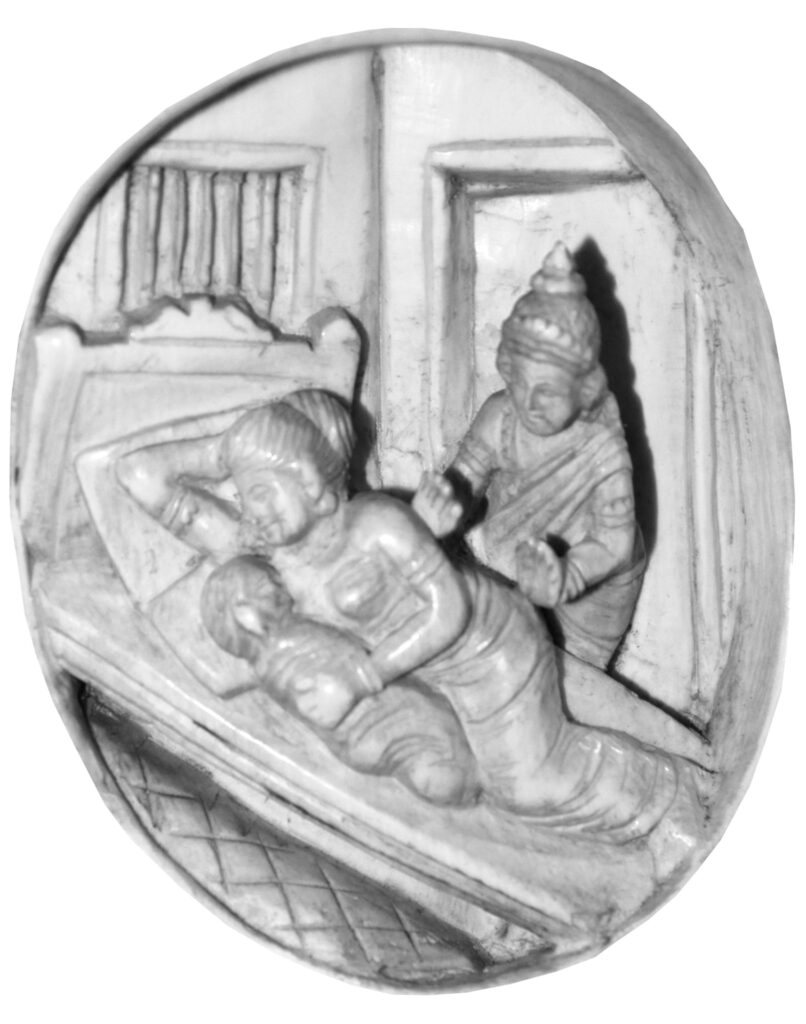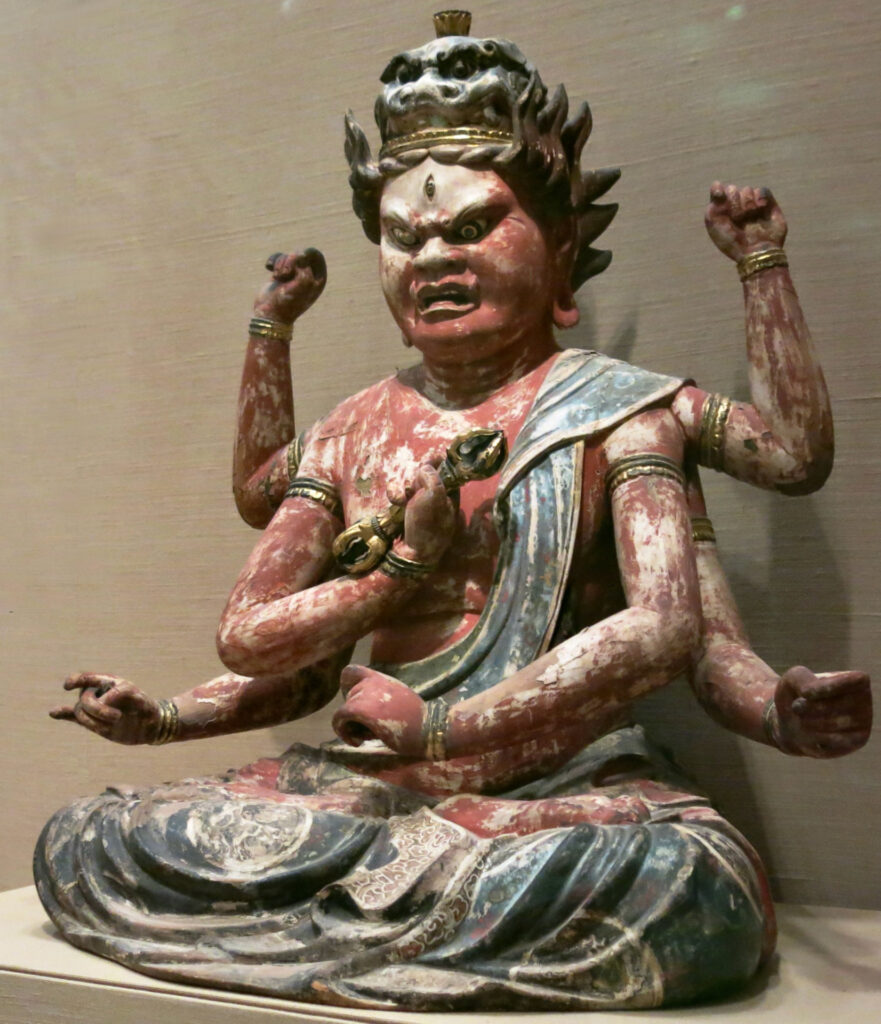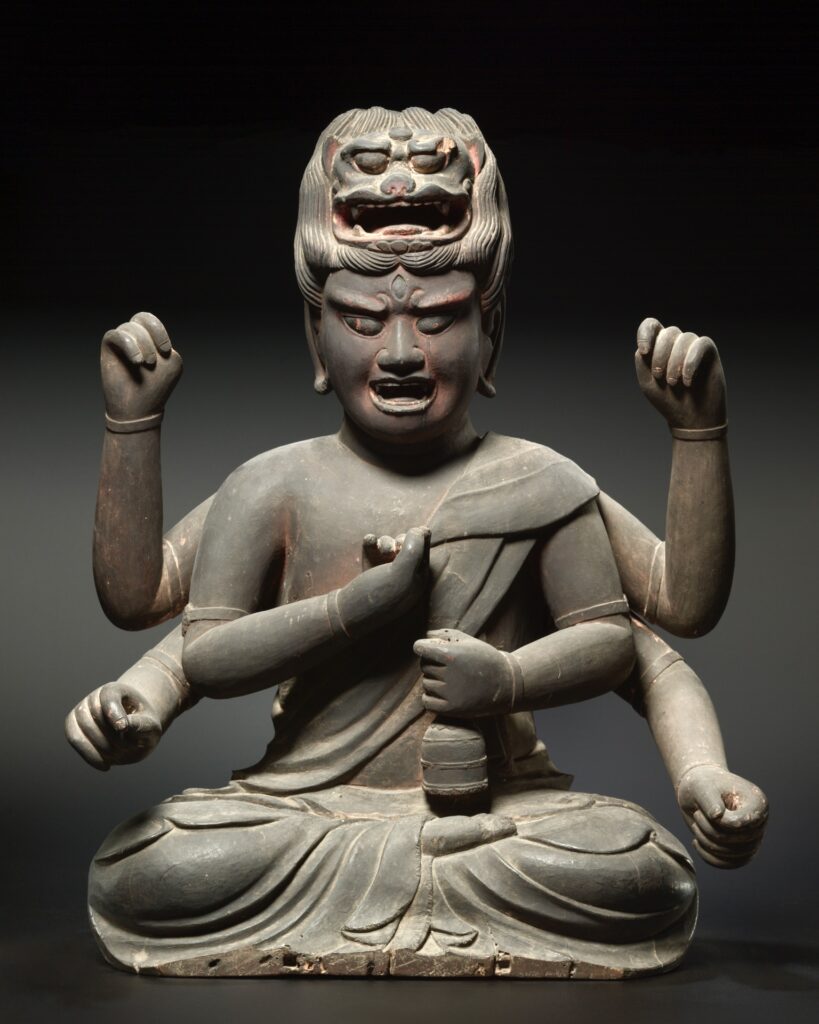Another story for liberal religious kids — well, maybe. I find this to be a challenging story. Buddha walks out on his wife and baby? I’ve known families where one parent walked out, ostensibly to “find themselves,” not unlike what the the Buddha did. But we should tell such a story to kids? Maybe like fairy tales, which put into words some of the things children fear most, this is in fact the kind of story we should share with kids. Another argument for telling this story to liberal religious kids: Sophia Fahs included her version of this story in her book From Long Ago and Many Lands, aimed at middle elementary grades, and Fahs had plenty of insight into the developmental capacity of children to understand difficult stories. Unfortunately, Fahs only included three of the four sights, so I wouldn’t use her version. That’s why I came up with my own version.
For this story I didn’t go back to one original sources, because this story is told and retold so often in the Buddhist tradition. I did the best I could to synthesize what I knew of the story. Consider this a provisional retelling of this tale. Leave any corrections in the comments.
Once upon a time, a prince named Gotama lived in a royal palace in the land of Kapilavastu, which was on the border between the countries we now call India and Nepal. Gotama’s family was very wealthy. As he grew up, the prince had everything money could buy. He had servants to take care of every need. He had the finest food. He had all the toys he could wish for.
The story is told that while Gotama was still young, a sage came to visit his parents, the King and the Queen. This sage was very wise. He looked at the young boy and said, “This child will grow up to be either a great king, or a great spiritual leader.”
Now his father wanted Gotama to become king after the father died. Therefore, the King decided that the young prince must never see anything that might raise spiritual questions in him. The King instructed everyone in the palace that Prince Gotama must never be allowed to go outside the palace grounds by himself, lest he fall into conversation with a wandering spiritual person. The King also ruled that Prince Toama must not see anyone who was ill, or disabled in any way, nor anyone who was old. The King also ruled that if someone died, the prince should hear nothing of it. Thus the King hoped to keep the prince from asking any spiritual questions.
To keep Gotama happy, the King and Queen gave him everything he could want, so that he would want to stay inside the palace grounds. And when he was old enough, they found the kindest and most beautiful young woman in all the kingdom to marry the Prince. Both the prince and his new wife were vary happy, and they became even more happy when they had their first child together. The King and Queen hoped that the prince had forgotten his wish to leave the palace on his own.
One day, when he was twenty-nine years old, Gotama went out of the palace to go hunting, accompanied by his servant Channa. As they were riding along on their two horses, they came upon a man lying beside a rock, groaning in pain.
“What is wrong with this man?” asked Gotama.
“He is ill,” said Channa.
“But why is he in such pain?” said Gotama.
“It is the way of life,” said Chana. “It is just what happens when people are ill.” And they rode on.
When he was back at the palace, he tried to ask the wise men there about illness, but they would not answer his questions.
Gotama and Channa went out hunting again. As they rode along, they passed a woman whose hair was white and whose skin was wrinkled, and who used a cane to walk.
“What is wrong with this woman?” asked Gotama.
“She is old,” said Channa.
“But what do you mean by ‘old’?” said Gotama.
“It is the way of life,” said Channa. “It happens to anyone who lives a long time.”
Back at the palace, Gotama tried to ask the wise men there about being old, but they would not answer his questions.
Gotama and Channa went out hunting again. As they rode along, they came across man lying as if asleep. But Gotama could not wake him.
“What is wrong with this man?” asked Gotama.
“He is dead,” said Channa. “This is the way of life, people must one day die.”
Gotama and Channa went out hunting a fourth time and saw a wandering holy person. Gotama asked Channa who he was.
“He is a wandering holy person,” said Channa. “He wanders around the world begging for his food, and seeking spiritual enlightenment.”
This was something Prince Gotama had never heard of before. That night, Gotama could not sleep. He remembered both the suffering he had seen, and the holy man seeking enlightenment. Gotama realized that he himself would one day face illness, old age, and death.
“I must leave the palace where I’m always protected,” he thought to himself. “I must find answers to my questions.”
He got up, and told Channa to saddle his horse. The he looked in at the bedroom where his wife and their child lay sleeping. If he left the palace, he worried that his his wife and son would not be safe. He didn’t want to make them go with him.
He stood looking at them, wondering what to do. Should he stay? Or should he go?
As it happens, we know what Prince Gotama did. He left his wife and child behind, went out into the wide world, and after many hardships he became the Buddha, the Enlightened One, one of the greatest spiritual leaders the world has ever known. Knowing that, what would you do? Would you stay and become a great king, or leave and become a great spiritual leader? Would you give up the chance of being enlightened to stay with your family?

(CC-BY-SA 3.0 Nomu420; modified by me.)








